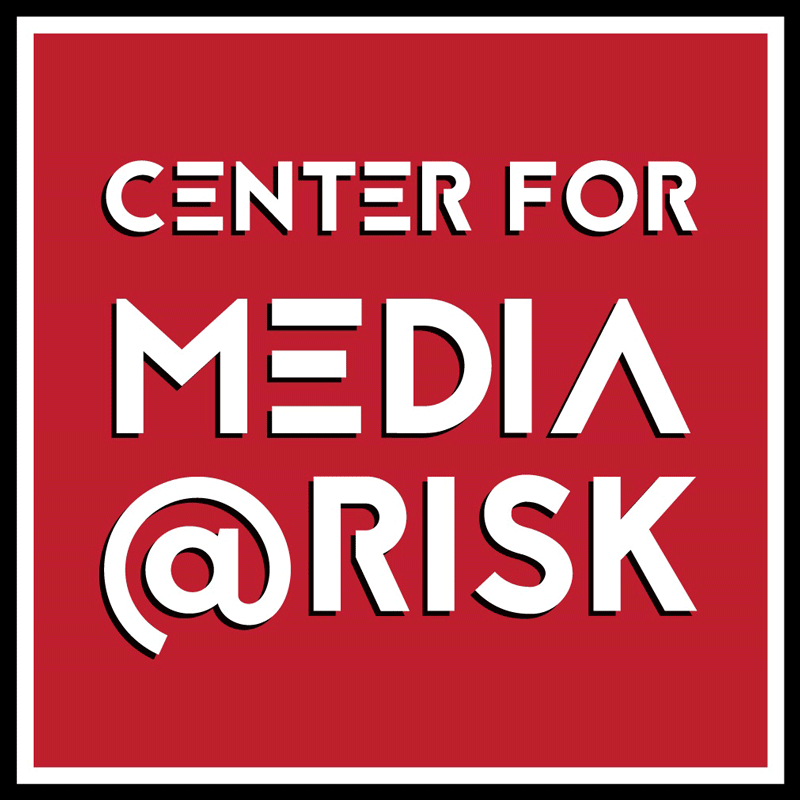Justine McDaniel covers the coronavirus in Philadelphia, Pennsylvania and New Jersey for The Philadelphia Inquirer. She spoke to Annenberg PhD candidate and Center Steering Committee Member Muira McCammon about the ups and downs of the ever-evolving virus-and-vaccine beat. The reflection addresses Justine’s efforts to combat health misinformation, report remotely and work collaboratively in the City of Brotherly Love.
In a recent reflection for Study Hall, Olivia Messer wrote a piece entitled “The COVID Reporters Are Not Okay. Extremely Not Okay.” She interviewed a number of other journalists who have been reporting on the pandemic and vaccine distribution, many of whom have opted to leave the industry or take an extended break from reporting after the past year. How have you gotten through the last year of COVID reporting?
Covering COVID-19 day in and day out has certainly required stamina. The good thing about it is that you know you’re doing a public service and providing people with essential information. That’s the biggest thing that has kept me energized. Because the information we’re reporting can be so critical for people to have — whether it’s about the state of case counts or the vaccine rollout — I’ve felt a strong sense of purpose. The ever-changing nature of the pandemic, too, has meant there is usually something new to report on or dig into. The vaccine rollout also marked a big change, breaking the monotony of the pandemic; that reenergized me as well. Now the pace of coronavirus news is picking up again, and we don’t know where it will go from here.
Personally, I got through the last year day by day. Each day was something new (even though it felt like Groundhog Day sometimes), so in that way, reporting helped — I was intensely busy and the workdays would go by quickly. I was grateful to have a job that put me in the middle of the news, so I didn’t have to try to concentrate on something unrelated while the pandemic was raging. Obsessing about COVID-19 was my job. I took up some new hobbies, including earring-making and crocheting, got a lot of emotional support from my late cat Maisie, who loved to sit on my lap while I wrote stories, and started watching only lighthearted or brainless TV.

What strategies have you invoked to convey and conceptualize risk in your reporting?
Clear, factual, straight information is the best thing we can give readers. I try to let the facts speak for themselves — whether that’s data such as case counts, test positivity rates or hospitalization and death numbers; stories from regular people; or information from scientists, doctors and other experts. Telling stories of people who have suffered from COVID-19, as The Inquirer has done, is one of the best ways to convey the gravity and risk. It’s hard to convey a risk that can’t be seen, but those stories make it real. Now, the number of those stories and the amount of real-world data showing the vaccine’s efficacy are only growing, which doctors are telling us is helping convince people to get vaccinated and which we’re continuing to report on. We don’t give space to misinformation or present a false balance.
I keep coming back to something CJR’s Jon Allsop said during the beginning days of the pandemic. He wrote, “The story is so huge that even these great efforts aren’t enough for us to get our heads around it fully.” I’m curious to know more about the kinds of stories you have tried to tell over the past year and the kinds of stories that you wished you had more time to tell.
I think that’s true. I don’t think people will be able to fully understand what we’ve gone through until years down the road. One challenge of reporting on the pandemic has been capturing the effect it has on people without making them feel like they are reading something that’s just making them relive it. In the midst of the pandemic, much of my reporting tended toward news-you-can-use — I think people wanted and needed straight, clear information. Still, we’re writing the first draft of history, and putting the daily news into the bigger picture, trying to briefly capture the sweeping effects of each new development, is key.
The stories I’ve enjoyed telling most so far were those during the initial vaccine rollout, when emotions were so high and people were often struggling to find appointments or use the systems put in place. I wish we had had more time to tell the story of how those systems got put in place and how decisions were made as the landscape changed so quickly.

What types of challenges have you faced in Philly while covering vaccines specifically?
Something that’s been interesting here is that Philadelphia has run its pandemic response separately from Pennsylvania, including the vaccine rollout. It’s one of only a few cities nationwide running its vaccination campaign independently of the state. That means Pennsylvania’s virus and vaccine data excludes Philadelphia, rules about mask-wearing or other restrictions can change when you cross the city border and there was a lot of criss-crossing for vaccinations that presented a data-tracking challenge. One of our jobs as reporters has been helping readers understand when rules differ between the city and state and helping to provide a full picture of the entire state, city included.
My coverage focuses on Pennsylvania, and in addition to covering the virus and vaccine, we’ve found coverage of the state’s data to be a key part of our work, from case tracking to demographics. It’s also been a stimulating challenge to cover and understand demand for the vaccine, efforts to address it, how people feel about it and what it means for where the pandemic goes next. Both in Pennsylvania and Philadelphia, covering vaccine hesitancy — the many and nuanced reasons people don’t get vaccinated and what elected and community leaders try to do about it — has also been a challenge because it varies so widely and requires careful, complex and localized reporting in many different communities.
I keep thinking about how so much of COVID coverage that I’ve read tends to focus on the divide between the vaccinated and the unvaccinated. I’m sitting with what Brian Stelter, CNN’s chief media correspondent, said not too long ago. He declared, “It’s almost like we need two kinds of newscasts, or two versions of the weather report. The forecast is pretty sunny for the vaccinated, but it’s quite bleak in some states for the unvaccinated.” Do you agree with him? How does this binary impact how you write and what framing you adopt in your coverage?
It’s science that the COVID-19 “forecast” — or your risk of getting sick, severely ill, or dying — is different for those who are vaccinated and those who are unvaccinated, and for regions that have high vaccination rates vs. those with low rates. In terms of news coverage, however, I am always writing for all readers. I don’t think too much about that binary when I’m reporting, unless I’m specifically writing about that divide. My goal is to deliver news about case counts and spread, vaccination rates and efforts, state government and pandemic restrictions to every resident and hope that it helps them understand the pandemic and make informed decisions. I also hope our coverage does its part in combating the misinformation people are seeing online and that readers trust us after seeing our stories for so many months and seeing that we’re committed to this coverage.

It’s seems like COVID underlies or structures so many other beats. It has shut down sports. It has disrupted school calendars. It has challenged political systems. It’s completely bulldozed entire industries and ended hundreds of thousands of lives. Given its percolation into so many industries and communities, how do you (and your editors) determine what’s part of your “COVID” beat, and what’s part of other beats (i.e. education, sports, or politics)? How are those lines drawn in the newsroom?
Covering the pandemic has been such an incredible collaborative effort across the newsroom, and I am forever in awe of all my colleagues’ reporting. Our newsroom’s ability to fire on all cylinders when coronavirus news picks up is a huge strength and a huge testament to the skill of my coworkers across the room. When breaking news happens that touches many beats, many people get working to get reactions and flesh out different angles, from business to food to labor to sports, and their feeds often create one big, newsy story.
For regular daily coverage, we drew geographic lines in 2021 for reporters who would cover the vaccine rollout— my colleague Erin McCarthy and I cover Pennsylvania, while other reporters cover Philadelphia and New Jersey. We are in constant touch and keep track of what’s going on across the coverage area. I try to keep a bird’s-eye view on everything happening across the three jurisdictions and spot trends. Other reporters and desks cover specifics: Our education reporters cover school masking mandates and other restrictions, as well as the intense debates taking place in school districts; our health team covers the science behind the pandemic, including medical and clinical aspects; and so on.
COVID isn’t going away, and it’s likely that reporters—especially local reporters—will be covering the virus, the vaccines and the continuation of the pandemic for many moons to come. How would you like to see the beat evolve? Are there certain changes you’d like to see implemented in the context of local COVID coverage?
It’s funny to think about how temporary we thought this would be when we first began reporting on it. Nineteen months later, I feel deeply invested in the beat. There are many directions it could go, but I think the most lasting impact will hopefully be increased reporting on public health policy and systemic inequities. Journalists can’t forget — or let the nation forget — about the deep inequities people of color face that existed long before the pandemic and were simply highlighted by the crisis. Covering those issues and the lack of investment in public health can’t be a trend that disappears when the pandemic lifts. We’ve also all learned that public health agencies and investment in normal times affects how prepared we are for crisis times, so I imagine there will be a continued focus on that.
I also hope local reporters can continue and grow watchdog coverage. Journalists need to push on government accountability stories that take more time and resources; we need to piece together how decisions were made, why and how it could affect public health policy moving forward. And, of course, it’s important to cover people and industries who continue to be deeply affected by the pandemic even after the virus is suppressed or all restrictions are lifted. The effects will continue rippling in untold ways, and there remain many more stories to tell.
Justine McDaniel is a news reporter for The Philadelphia Inquirer covering the coronavirus pandemic. A California native with a master’s degree in journalism from the University of Maryland, she has covered news, policy, environmental contamination, and other topics for The Inquirer since 2014. Find her on Twitter @McDanielJustine.
Muira McCammon is a Steering Committee Member of the Center and PhD candidate (ABD) at the Annenberg School for Communication. She recently interned at Microsoft Research’s Social Media Collective, where she researched the role private contractors play in crafting and circulating the state’s speech. Muira studies what governments conceal and make visible. She also holds a law degree from the University of Pennsylvania Carey Law School.


